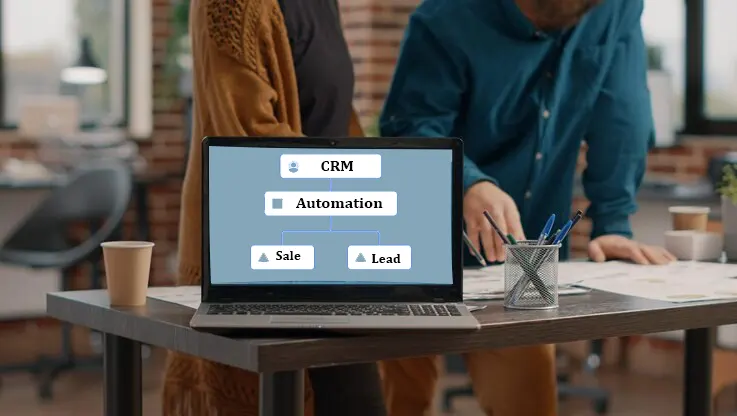Dynamics 365 CRM Implementation: A Comprehensive Guide
Dynamics 365 CRM implementation platform is complex with many interconnecting parts. This step-by-step guide includes key elements to effectively plan and sustain Dynamics 365 driving ongoing value.
Lockdown Goals and Requirements Upfront
Kicking off a major project without alignment around goals risks wasted effort and confusion down the line. Before configuring anything in Dynamics, clearly define business challenges needing Microsoft Dynamics CRM services and solutions through structured discussions with stakeholders.
- Executives: What revenue growth, customer retention or efficiency metrics need improving? How will success be measured?
- Sales: What persistent issues decrease reps’ productivity the most? What data or insights would help convert more leads?
- Marketing: What struggles make coordinating campaigns with Sales hardest? What analytics gaps make targeting and budget guessing games?
- Service: What manual efforts handle the same basic issues repeatedly? What real-time customer data would deflect frequent questions?
- Finance: What tasks and reports take days despite having data somewhere in the systems? What key decisions depend on tribal knowledge rather than accessible facts?
Paint a quantifiable picture of current struggles then illustrate how Dynamics 365 CRM implementation addresses those directly. Connect goals like increased lead conversion rates to features like workflow automation and predictive lead scoring. Ensure the vision resonates across functions, not just IT aspirations. With goals clear, detailed precise must-have components fulfilling needs and commit to firm cutoff criteria for anything deemed out-of-scope.
Revisit prioritizations regularly as new perspectives emerge but avoid scope creep blowing budgets and timelines out. Socialize proposals with executive sponsorship to validate alignments and secure buy-in upfront. Laying this diligent groundwork pays exponential dividends later. It enables constructive future tradeoff discussions grounded in a shared vision if tough prioritization choices appear mid-project.
Map Integrations and Data Flows
Dynamics can’t fix poor processes or data issues copied and pasted as-is. Set baseline understanding of cross-functional workflows and systems informing Dynamics 365 CRM implementation design decisions.
- Inventory Existing Systems
Catalog other core platforms touching customer experiences like eCommerce, billing, and marketing automation. Note the types of data stored and how accessed like batch exports or real-time APIs.
- Diagram Workflows
Map existing lead-to-cash, issue-to-resolution, and other critical processes. Call out manual hand-offs and decision points.
- Identify Gaps and Pain Points
Highlight broken experiences, productivity bottlenecks, and decisions made on gut feeling indicating information gaps. Does sales forecasting require 50 manual Excel consolidations? Do service route issues across 4 systems need separate logins? Call attention to data pain points causing reporting headaches too. API-based connectors, master data management, and workflow automation components may be required to fill ecosystem gaps.
- Executive Sign Off
Re-socialize proposed process and data optimizations ensuring architectures scale to fuel company growth. Get sign-off on tools fulfilling Dynamics 365 CRM implementation environment requirements. Leave no ambiguity around cross-functional processes or IT landscape post-implementation. It sets the project on a path to solve true business issues, not just deploying new technology.
Assemble Implementation Dream Team

Realizing Dynamics 365 CRM implementation value requires staffing the right technology and business specialists bridging strategy to execution across the full project lifecycle.
- Implementation Consultants
Even adopting Dynamics out-of-the-box needs experts guiding optimal configuration and integration point designs based on industry best practices. Relying on external partners supplements internal capacity and skills launching new platforms. Maintain ubiquity enforcing standards across groups.
- Integration Architects
Vet tools like Scribe Online simplify data connections to core surrounding systems enabling a holistic view to increase customer retention. API-based integrations ease real-time data sharing minimizing added IT burden.
- Admins and Support Staff
Identify internal personnel to shadow consultants throughout rollout then assume ongoing enhancements and issue resolution post-go-live. Formalize admin training in how Dynamics schema structures data, configures processes, creates fields/entities, and manages plugins.
- Power Users across Functions
Identify key heavy users within each group served by Dynamics like sales managers. Make them pilot testers before broad rollouts. Get user perspectives on enhancements increasing adoption. Harvest their app know-how mentoring peers. Provide sandbox environments for safe self-service testing.
- Executive Steering Committee
Establish an oversight team of senior stakeholders monitoring progress, budgets, risk mitigation, and sign off on major project decisions. Maintaining alignment to business goals and centroids vision keeps activities focused on end outcomes beyond technology change. Staffing broad expertise sustains Dynamics gains realized during the initial rollout and post-implementation phases. Cover all skillset bases early.
Clean Up Data
Without quality underlying data, Dynamics just propagates existing problems faster. Don’t leave this as an afterthought!
- Consolidate Trusted Sources
Legacy systems and spreadsheets commonly breed scattered Dynamics 365 CRM implementation data. Assess the current landscape identifying duplication across silos. Retire legacy systems as able to pair down to fewer authoritative masters streamlining synchronization and governance.
- Profile and Remediate Issues
Even trusted sources need inspection, profiling reveals hidden data issues impacting downstream processes. Do taxonomy structures differ – ZIP codes stored as integers in one vs. text in others? Run diagnostics quantifying completeness, duplication, and sanity checks finding what requires addressing. Clean through both system updates and new process controls preventing reoccurrence.
- Model Data for Business Needs
Standardize data capturing all attributes needed for business use cases – sales conversions, service routing, and predictive models. Will leveraging geospatial coordinates help territory planning or stocking optimization? Disparate product line segmentation hierarchical structures assist cross-sell decisions. Align data to precise business needs, not just what is historically available.
- Govern Master Data Elements
Certain datasets are classified as “masters” feeding many dependent processes like customer lists, product catalogs, and organizational charts. Assign data stewards governing consistency, security, and health for these critical data elements.
Utilize tools like Master Data Manager to centrally govern hierarchies, attributes, and metadata improving downstream data alignment across groups. High-quality data isn’t a luxury, it’s foundational to uncovering insights at scale using Dynamics. Clean your foundation early!
Onboard Users Deliberately
Dynamics only unlocks value if users understand and trust the capabilities rolled out to them. Uncertainty breeds rumors around capabilities changing without context. Get ahead of whispers through regular, transparent communications emphasizing “What’s in it for me?” tailored to each role. Celebrate milestones sharing examples of functionality in action. Make training invitations exciting teasing features coming their way soon.
- Offer Hands-On Practice Opportunities
Classroom demos help introduce but real adoption requires hands-on reinforcement. Provide sandbox testing environments to safely try functionality without risking real data consequences. Let people personalize views, build templates, and simulate scenarios from their actual workload. Functionally-led workshops build cohorts and best practice sharing.
- Incentivize Engagement through Friendly Competition
Reading emails alone rarely converts to application. Consider injecting some friendly competition rewarding teams and individuals demonstrating behaviors hoped for. Recognize power users publicly; highlight groups’ fastest assimilating capabilities through leaderboards. Draw out those excelling to mentor peers is still tentative.
Managing end-user experiences determines long-term Dynamics ROI more than any vendor capabilities touted early on. Spend enough cycles here and reap exponential returns down the road.
Sustain Governance post-launch
Hitting go-live is no finish line, but rather the starting whistle for ongoing oversight keeping Dynamics investments delivering value years beyond initial rollout.
- Celebrate Early Successes
Big bang launches bring big headaches if not thoughtful. Recognize adoption milestones early and often spotlight wins to build confidence this is the start of improvement not just change. Reinforce desired behaviors through public praise and rewards building organic momentum from person to person.
- Institutionalize Standards and Controls
Structure doesn’t hamper agility, it enhances responsiveness by clearly defining procedures guiding common actions. Codify data policies and access protocols for consistency. Document change release processes, and environment protocols.
Formalize schedules for feature prioritization, upgrade cycles, and platform reviews against goals. Well-documented standards empower autonomy within guardrails.
- Tend and Grow Capabilities over Time
Business needs constantly evolve so Dynamics capabilities can’t stay static either. Maintain enhancement backlogs and monitor usage metrics to quantify where added features or optimized existing functionality create value. Deepen integration sophistication with surrounding systems maturing. Keep improving!
Dynamics is a journey, not a destination. Embrace ongoing governance keeping innovations aligned to business outcomes and unlock value for years to come. With thoughtfulness across the key focus areas detailed above, organizations avoid bumpy roads operationalizing Dynamics, ultimately creating a custom-fitted engine revving your business performance to new heights!

Monitor Performance Metrics Closely
A Dynamics 365 CRM implementation is useful only if it improves key metrics that show how well your business is doing. Set clear goals upfront for what should get better after Dynamics 365 CRM implementation. Then track these numbers each month to know if it is working.
- Sales Management Metrics
Watch lead conversion rates monthly. This shows what percent of leads turn into sales over time. Is it growing steadily? Or staying flat? Any drops need more sales training probably. Shorter sales cycles close deals faster. Count how many days pass between the first contact and to closed deal each month. Faster is better. Why – figure out through rep feedback.
Better forecasts align inventory, hiring, and marketing budgets to realities. Do forecasts match closer to final sales amounts each quarter? Accuracy improves planning decisions. Upsell more around initial purchases. Is the percentage or value of add-ons increasing thanks to tools showing customer history easily?
- Marketing Operations Metrics
What campaign dollars convert to sales? Divide sales from campaign leads by total ad or event spend to know ROI. Healthy over 2X return is great below 1X cuts losing ideas quickly. Traffic is up but poor conversion left? Monitor each campaign separately. Identifying weak spots turning cold leads to warmer often requires new content offers.
Higher open and click rates reflect better targeting. Test email subject lines through A/B testing as just changing those often lifts response quite a lot remarkably easily.
- Service Delivery Metrics
Speedy case closure rates keep customers happier. Track by agent, issue type, and severity monthly to optimize operations. Customer surveys after cases log satisfaction directly from the source! Score 1-5 across key attributes like timeliness, knowledge, and tool access. Scores inform agent coaching areas or process breakdowns equally.
Shoot for resolving queries in under 8 hours through proper tools access, knowledge base search, and streamlined escalations. Again, slice by product line, user type, and channel initiating case. Patterns emerge. Track cases re-opened within 7 days too. Often quick but wrong answers do this requiring better first contact training and documentation to permanently fix root causes.
- Finance Planning Metrics
Getting paid quickly improves cash flow. Days Sales Outstanding measures the average time between the sale date and payment receipt – the lower the better. What delays did Dynamics 365 CRM implementation shrink fastest? Invoice steps that frustrate customers cost more than technology to fix long run. Which modules made self-service billing or reporting easier internally clipping payroll costs? There?
Data accessible sooner equals decisions made faster. Compare how quickly key monthly/quarterly views were available before versus after the Dynamics rollout. Report turnaround time savings benefits compound when decisions happen quicker rippling savings wider over time. Present easy-to-digest views tracking month-to-month trajectories towards yearly targets at regular reviews.
Consistently quantifying tangible progress builds support converting skeptical holdouts over time to seeing proof. Dynamics 365 CRM implementation success established through sustained metrics improvements speaks volumes louder than any vendor claims guaranteeing nothing alone. Patience and discipline tracking meaningful gains position the platform and team driving it for continued expansion towards helping other groups soon potentially too.
Keep Expanding to New Use Cases
Dynamics platforms scale to support expansive sets of capabilities over time. Once initial implementations stabilize, progressively roll out incremental tools improving experiences and metrics:
- Elevate Customer Insights
Layer on Dynamics 365 Customer Insights to stitch together data from all sources creating complete intelligent customer profiles. Build better segments, more predictive models, and personalized cross-channel experiences customers appreciate.
- Extend Portals Reach
Expose more self-service access through Dynamics 365 CRM Portals – let customers manage service cases, access knowledge bases, and complete e-commerce purchases faster without agent transfers. Make it easy to engage how they prefer.
- Enable Field Productivity
Empower sales teams through Dynamics 365 CRM guides building custom protocols optimizing client discussions. Access checklists, training videos, and experts connecting remotely without fumbling. Ensure teams represent the brand consistently with online/offline materials using Dynamics 365 CRM implementation.
- Tap AI to Consolidate Tasks
Dynamics 365 CRM implementation and incorporating to centralize orders from all channels into one basket optimizing fulfillment efficiencies. Automate order sourcing, batch payment processing, and return tracking and cancellations leveraging predictive signals. Dynamics 365 CRM implementation bolsters an endless array of functions over time. Prioritize new capabilities strategically against needs quantifying best ROI as implementation mastery grows.



